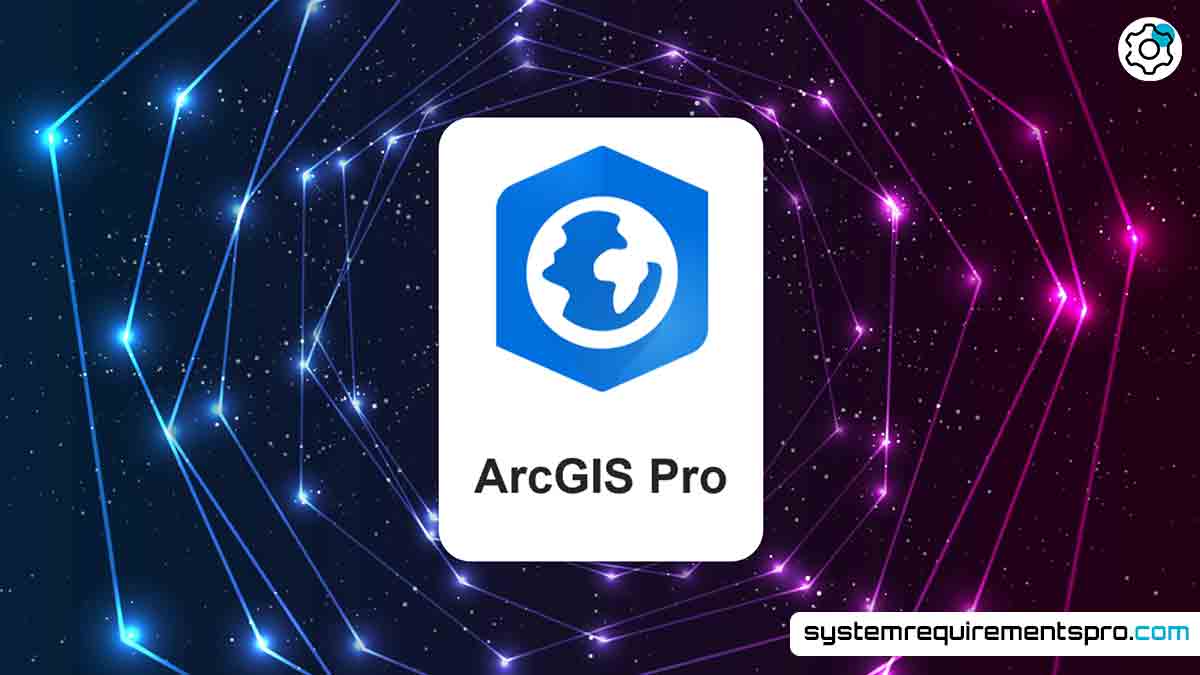Imagine painstakingly creating a geospatial analysis for hours, only to have your program lag or crash at a pivotal point. Understanding the ArcPro System Requirements is the first step toward preventing such frustrations for GIS professionals depending on ArcGIS Pro (ArcPro). Your hardware will either make or break your workflow, whether you are visualizing 3D landscapes, mapping urban infrastructure, or analyzing environmental data. This handbook explores the key requirements, best practices, and FAQs to enable you to maximize performance and reduce downtime.
ArcPro Minimum System Requirements
Although ArcPro is a strong tool for contemporary geospatial work, it can run on basic hardware if your projects are rather simple. Here is what you need to begin:
Minimum Requirements
- Operating System: Windows 10 or 11 (64-bit only). Windows Server 2016/2019/2022 is also supported.
- Processor (CPU): A 4-core CPU like an Intel i5 or AMD Ryzen 5. Hyper-threading is beneficial but not mandatory.
- Memory (RAM): 8 GB of RAM. This allows for light multitasking but may struggle with larger datasets.
- Storage: 32 GB of available storage on a hard disk drive (HDD). However, solid-state drives (SSDs) are strongly advised for faster data access.
- Graphics Card (GPU): Integrated GPUs like Intel UHD 620 can handle 2D mapping, but expect limitations in 3D rendering.
- Display: A monitor with 1280×800 resolution or higher.
These specs are best suited for small-scale projects or sporadic use, even though they will let you open ArcPro and execute simple edits. Complex chores like machine learning or lidar processing could cause performance problems.
ArcPro Recommended System Requirements
Think 3D modeling, real-time analytics, or large-scale datasets—professional users addressing challenging workflows—the following guidelines guarantee best performance:
Recommended Requirements
- Operating System: Windows 10/11 (64-bit) with the latest updates installed.
- Processor (CPU): A 6-core CPU (Intel i7 or AMD Ryzen 7) or higher. Additional cores improve parallel processing for tasks like geoprocessing.
- Memory (RAM): 32 GB of RAM. This accommodates multi-layered maps, large imagery, and seamless switching between applications.
- Storage: 1 TB NVMe SSD. SSDs drastically reduce load times for projects and improve data retrieval speeds.
- Graphics Card (GPU): A dedicated GPU with 8 GB of VRAM, such as NVIDIA GeForce RTX 3060 or AMD Radeon RX 6700 XT.
- Display: A 4K monitor (3840×2160) for crisp visualization of intricate details.
Purchasing recommended hardware reduces lag, improves rendering quality, and future-proofs your system for changing GIS requirements.
ArcPro System Requirements PC: Minimum vs Recommended Requirements
Your project complexity and budget will determine whether the minimum or recommended specs are appropriate. Here’s a brief analogy:
| Category | Minimum Requirements | Recommended Requirements |
|---|---|---|
| OS Requirements | Windows 10/11 (64-bit) | Windows 10/11 (64-bit, updated) |
| CPU Requirements | 4-core (Intel i5/Ryzen 5) | 6-core+ (Intel i7/Ryzen 7+) |
| RAM Requirements | 8 GB | 32 GB |
| Storage Requirements | 32 GB HDD | 1 TB NVMe SSD |
| GPU Requirements | Integrated (e.g., Intel UHD 620) | Dedicated (8 GB VRAM, e.g., RTX 3060) |
| Display Requirements | 1280×800 | 4K (3840×2160) |
Recommended configurations save time and frustration for professionals handling resource-intensive tasks, even though the minimum specs are cost-effective.
Optimization Tips for the ArcPro Software
Even if your system meets the minimum requirements, these will help:
- SSD Storage: Store active projects and geodatabases on an SSD to speed up data access.
- Background Processes: Close unnecessary apps to free up RAM and CPU.
- Update Drivers: Update GPU and motherboard drivers to keep up with ArcPro updates.
- Simplify Map Layers: Reduce symbology or disable layers during editing.
- Cloud Solutions: Use ArcGIS Online or Enterprise to offload data storage and processing.
- Performance Settings: In ArcPro, go to Project > Options > Display to tweak anti-aliasing and cache.
These will help bridge the gap between minimum and recommended specs, especially for mid-tier hardware users.
Conclusion
The power of ArcPro resides in its capacity to convert unprocessed data into useful insights, only if your system can keep up. Aligning your hardware with the ArcPro System Requirements helps you to enable faster, smarter, less interrupted working. Investing in the correct tools guarantees you’re ready for today’s challenges and tomorrow’s innovation, regardless of your level of experience with geospatial technologies.
Frequently Asked Questions
Can I run ArcPro on Mac or Linux?
ArcPro only runs on Windows. While you can run Windows on a Mac with Boot Camp or Parallels, performance will suffer.
Is 16 GB of RAM enough for ArcPro?
16 GB is okay for moderate use, but you will struggle with 3D scenes or large datasets. 32 GB is recommended for smooth performance.
Do I need a dedicated GPU for 2D mapping?
No, integrated graphics will do for 2D. But a dedicated GPU will speed up rendering and display.
Can I use an external SSD for ArcPro projects?
Yes, but make sure it’s connected via USB 3.0 or Thunderbolt for fast data transfer.
How often do system requirements change?
Esri updates requirements with major releases. Check their documentation annually or before you upgrade.
We hope that you have found the answer to the system requirements for ArcPro. Follow System Requirements Pro for more such updates, and bookmark this page to get the latest updates on the system requirements for ArcPro.

